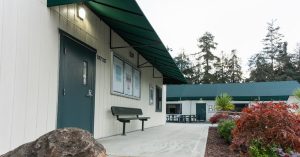Rocketship Charter Expansion Faces Legal Challenge
Rocketship charter school expansion in Santa Clara County faces significant headwinds in its ambitious expansion plans. Last week four San Jose school districts – Alum Rock, Evergreen, Franklin-McKinley and Mt. Pleasant – filed a lawsuit demanding that the County Board of Education withdraw its approval of 20 new Rocketship schools. Last year a court ruled that SCCOE couldn’t exempt the charter school chain from San Jose zoning rules.
The lawsuit charges the county board usurped local school district authority to approve new charter schools in Alum Rock Elementary, Campbell Union, Evergreen, Franklin-McKinley, Mt. Pleasant Elementary, Oak Grove, San Jose Unified, and Santa Clara Unified. Rocketship planned to begin operations in some new schools starting in the 2014-2015 school year.
The districts’ position is that Rocketship’s request to establish these new schools failed to show that the company’s educational services couldn’t be equally well provided by charter schools authorized by a local school district, and couldn’t be established by petitions to the local districts. SCCOE staff recommended against the approval of the new charter schools on the same grounds, but the county board of education approved the new Rocketship schools anyway.
“The California education code [section 47605] provides for charter schools generally to be approved through school districts,” said attorney Sue Ann Evans of DWK, which is representing the four districts. “The law encourages districts to approve charters,” she said, adding that charters can appeal district denials to the county, and county denials to the state. Rocketship already has schools in local districts, including Franklin-McKinley, that were approved through the normal channel.
By comparison, the law [47605.6] gives county boards limited rights to approve charter schools, Evans continued. “The county has to make specific findings that the charter’s services could not be provided as well by the local district, and there’s a reasonable justification for providing such services county-wide.” One example would be special education schools that are also residential.
Rocketship contends that its educational mission is necessarily county-wide.
“With a countywide enrollment preference we can serve the larger concentrations of low-income/English Language Learner students who are present in certain areas of certain districts,” said Rocketship Education Bay Area VP David Kuizenga in an email, “while simultaneously serving smaller concentrations of those populations living in other districts where real estate prices or overall demographics make it difficult to justify opening a new school.
Rocketship’s Rocky Performance
Rocketship’s results locally are open to question. An examination of last year’s Academic Performance Index (API) shows performance dropping in all of Rocketship’s local schools – sometimes dramatically as in Mateo Sheedy Elementary in downtown San Jose whose API dropped by 73 points. On average, Santa Clara County charter schools showed a seven point API drop from 2012 to 2013, with declines outnumbering improvements by about 3:1.
For the same period, three of the districts in the lawsuit also saw overall API declines – Alum Rock, four points; Evergreen, seven points; and Mt. Pleasant, 16 points – while Franklin-McKinley posted a seven point gain.
Rocketship admits that its new “Flex” classrooms have under-performed. Critics say that the method, which puts about 100 students in a single classroom with three teachers, rotating group activities and lots of computer-aided instruction, is really aimed at reducing operating costs to free up money for expansion, according to a recent story in Education Week.
In 2012, Rocketship, a 501(c)(3) non-profit, reported roughly $13.1 million in revenue and $10.6 million in expenses – which includes $800,000 in officers’ compensation and $280,000 in travel expenses. The company operates charter schools in San Jose, Milwaukee, Nashville, and Washington DC, and reportedly has ambitious plans to expand to 50-60 schools in the next five years.
Although charter schools are funded from the public education budget, they are run by private boards, are not required to follow the state education code, and aren’t accountable to elected district officials. Although the reasoning behind them is that with more freedom for experimentation, they can achieve better results, the data doesn’t seem to show it.
A 2009 report from Stanford’s Center for Research on Education Outcomes (CREDO) – the first detailed national charter school study -found that, when compared with demographically matched students in nearby public schools, 17 percent of charter schools students gained significantly, 46 percent showed no difference, and 37 percent did significantly worse.
An Ed Week analysis of California Department of Education data showed a 30 percent drop in the number of Rocketship students scoring “proficient” or above in English/language arts over the past five years, and math proficiency rates dropping 14 points.
Rocketship’s management denies the assertion that its results are less than positive. “The fact is that Rocketship ranks in the top five percent of school networks serving low-income students in the entire state,” said Kuizenga. “Rocketship schools offer excellent options to the families we serve and nothing speaks better to our success than the fact that parents are lining up to enroll their children.”
SCUSD’s Reading Recovery Program, a National Model
Last week Senator Diane Feinstein’s educational aide, Katie Gross, visited Santa Clara Unified to learn about Reading Recovery, an early intervention program designed to accelerate literacy progress for lowest achieving first graders. Data from the program in East Palo Alto, San Juan Unified, and SCUSD was the driver behind i3 (Investing in Innovation Fund) federal funding to scale the program nationally over the next five years.
Reading Recovery has a long history in SCUSD, going back as far as 1993, according to SCUSD Reading Intervention Specialist Lisa Blanc. SCUSD is one of 12 training sites in the state and has trained 33 teachers in Reading Recovery over the past three years thanks to the i3 funding.
Last week, Gross attended the entire Reading Recovery training class taught in Santa Clara that night, and was able to observe two lessons taught by teachers in training, and observe the discussion that followed.
Reading Recovery is a whole language method that includes all components of literacy – phonemic awareness, phonics, fluency, oral reading, vocabulary, and comprehension. Teacher certification in the program equates to over 130 hours of professional development in reading instruction and over 450 hours of ‘on the job training’ working with students one-on-one.
Using diagnostics and classroom teacher recommendations, the program identifies at-risk children. Students work individually with a specially trained teacher, daily, for half an hour for anywhere from 12 to 20 weeks – until the student’s reading performance level reaches the average class level.
Reading Recovery’s critics consider Reading Readiness a band-aid for something that was flawed in the first place, whole language methodology. One of those critics is SCUSD Trustee Ina Bendis, who panned the program as ineffective and expensive in a 2011 email to former Superintendent Bobbie Plough.
The program was evaluated in 2012 by the U.S. Department of Education’s Institute of Education Sciences, and the findings were published on the agency’s “What Works” website (ies.ed.gov/ncee/wwc). While finding that the vast majority of studies to date didn’t meet the IES’ exacting evidence standards, the agency reported a 46 percent reading fluency improvement for students in the program.










0 comments